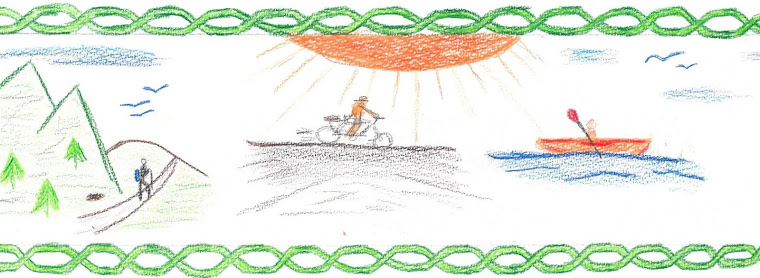Volunteers gathered at the Sebago Canoe Club, located along Paerdegat Basin in Brooklyn, NY, were expecting not one, but two groups of youth to paddle last Friday. Once again, I was there to help. The previous scheduled youth paddle never happened because the youth and their adult leaders never showed up. This time was different.
Exactly on time at 10:00 AM, the youth and adult leaders from the 77th Precinct arrived. Sized and outfitted with PFDs and paddles, and briefly instructed by Gerry on how to paddle, they were in the water by 10:45. Eight youth paddled Ocean Kayak Prowler 13’s. One youth and one adult leader paddled Necky Zoar Sport LV’s. These ten boats were accompanied by fourteen volunteers in thirteen boats, better than a one-to-one adult leader to youth and Sebago volunteer to participant ratio! Thirteen volunteers paddled kayaks, with Lisa and Gary in a tandem. Andy paddled a canoe.
As soon as the youth were on the water they dispersed in all directions until we provided a little more paddling instruction and the youth got the hang of it. Eventually, in spite of a strong wind blowing us toward the northern terminus of the basin, we generally paddled together toward the end, then turn ed around and paddle toward the basin’s opening into Jamaica Bay. We made it only as far as just past the commercial docks, however, before the clock forced us to head back to the Sebago Dock.
While we were on the water another group of youth and their adult leaders, from the 88th Precinct, had arrived. Rebecca kept them busy with water quality testing activities until we returned with the 77th precinct. She planned to do the same with the youth of the 77th Precinct while we took the 88th out for a paddle.
Once back at the dock, all the 77th Precinct paddlers and most of the Sebago volunteers climbed out of their kayaks and took a break on terra firma. Gary, Vicki and I, however, remained on the water in our boats while waiting for the next group to enter the water.
As sone as a few of the next group were on the water, one of them accidently rammed a youth in an Ocean Kayak Kea, sending him overboard. Even though he was only 10-15 feet from the dock, I paddled over to rescue him. As I approached, I could see he was a little panicky. Even though I offered him my bow, he grabbed hold of my port deck line and started climbing back my port side toward the cockpit. I was finally able to reassure him enough to calm him down and I talk him back toward the bow. With him holding onto my bow, I paddled him to the dock where Tony helped him climb out of the water and onto the dock. Nina then went with him into the clubhouse and provided some dry clothes. Once recovered, he was back on the water, but this time in a tandem with an adult volunteer.
With the wind even a little brisker than it had been earlier, we repeated the course we had paddled earlier in the morning. The 88th Precinct group included eight youth in kayaks, a youth and a Sebago adult volunteer in a canoe, a youth and an Sebago adult volunteer in a tandem, two Sebago adult volunteers in a tandem, and the rest of the Sebago volunteers in kayaks, twenty-one boats in all.
Paddling back toward the Sebago dock after we had turned around, another youth in another Kea took a spill. Gerry and Chris were closer than anyone else was and appropriately responded. Between the two of them, they were able to help the young man back into his sit-on-top. As I skulled nearby I could tell from the youth’s face that he was not at all scared and even seemed to be enjoying himself from the moment he went over to the time he was back on top.
Because of the heavier wind and time constraints, we still paddle south past the Sebago dock before returning but not all the youth were able to paddle as far south as the earlier group.
I paddled a red Sealutions I had paddled before. Vicki paddled her new previously owned Current Designs Sirocco she has named “Sirensong”. Throughout the paddle, I could occasionally hear her saying “I love my Boat. I love my Boat. I love my Boat.” I think she loves her new used kayak.
After all the youth had cleared their boats from the dock, the adults also started docking and carrying boats and gear up the wash rack to be rinsed with fresh water before being stored. Once all the gear had been stored and the youth headed for home, most of the Sebago volunteers ended the paddle with grilled veggie burgers, kielbasa, Laurie’s homemade pickles, and other tasty treats.
Sea salt dried and adhered to my camera lens early in the trip, rendering most of my photos useless. Thus, there is no picassa album accompanying this post.



